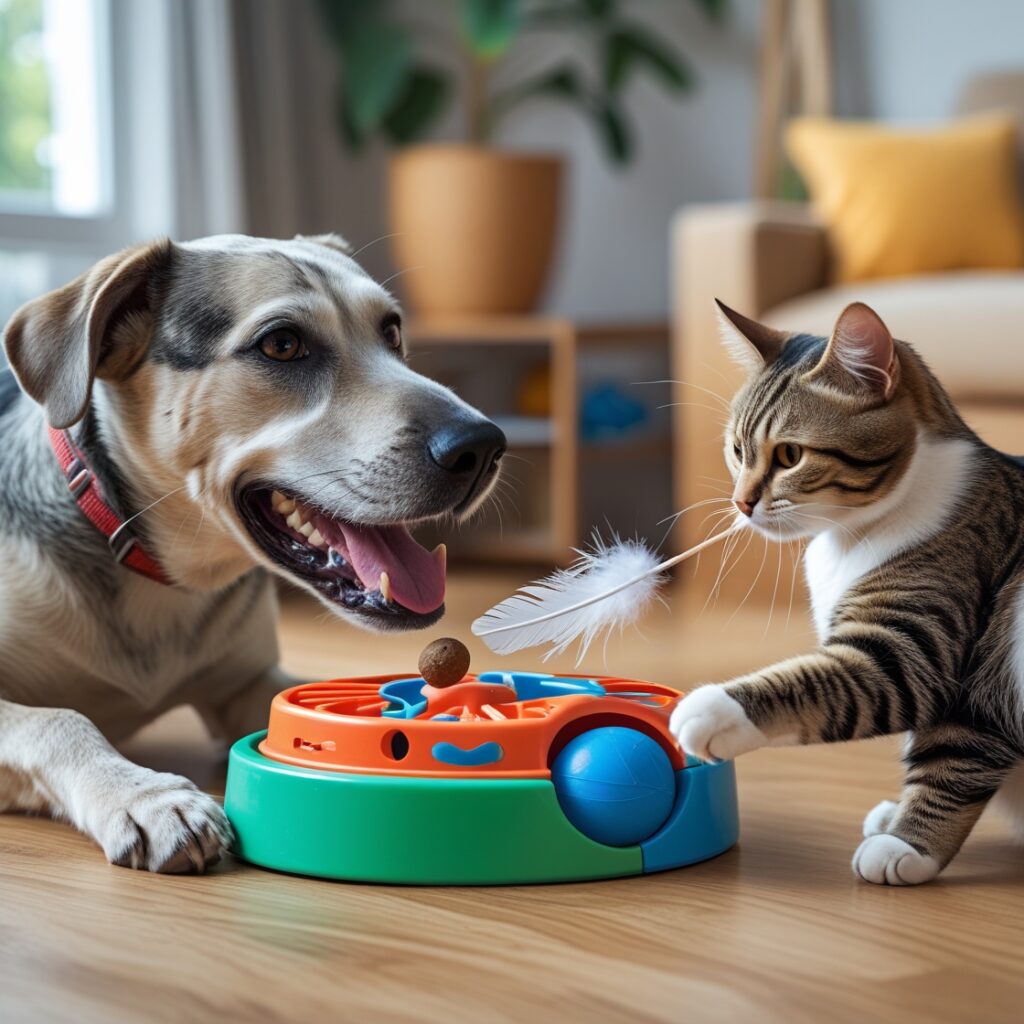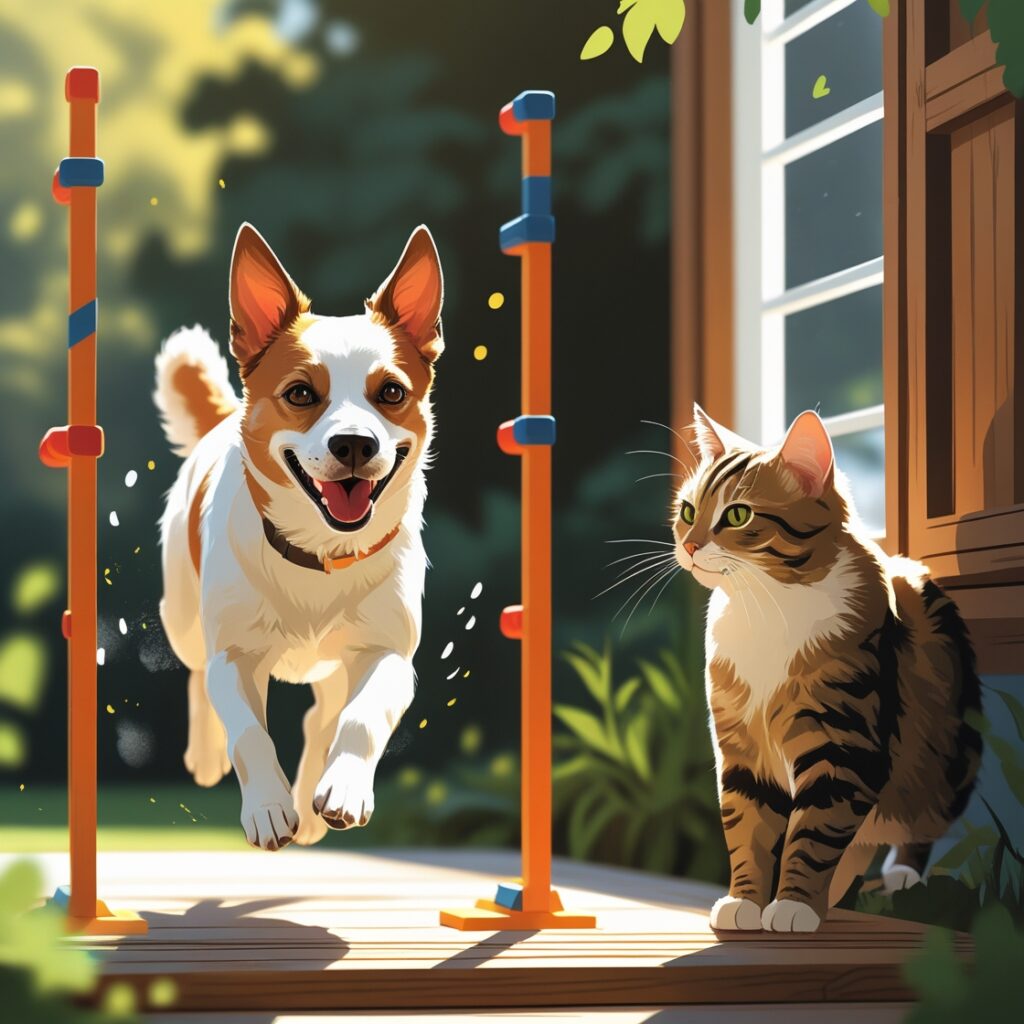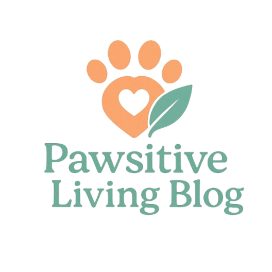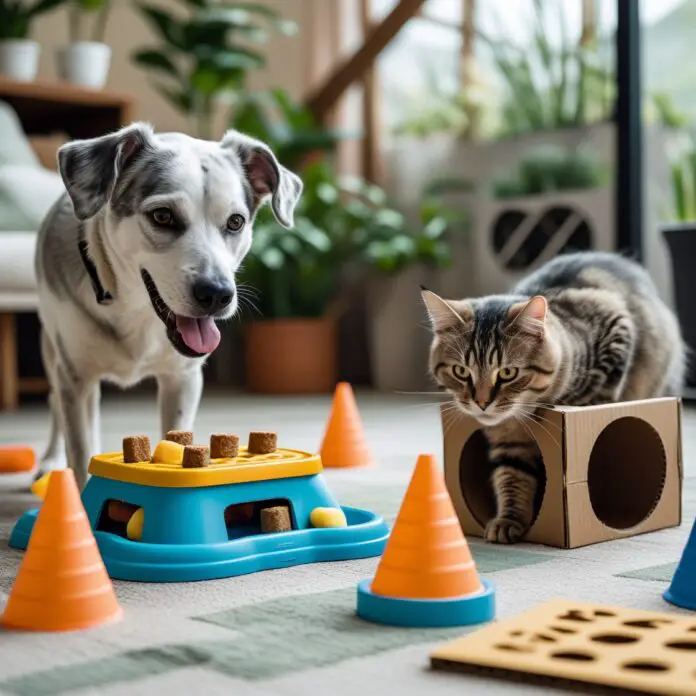Is your furry friend looking a bit bored these days? 🐾 You’re not alone! Many pet owners struggle to keep their beloved companions mentally stimulated and physically active. But fear not, because the secret to a happier, healthier pet might be simpler than you think: enrichment activities.
Enrichment isn’t just a buzzword—it’s a game-changer for your pet’s wellbeing. From puzzle toys that challenge their minds to exciting new scents that awaken their senses, these activities can transform your pet’s daily routine from mundane to magnificent. 🐶🐱 By incorporating a variety of enrichment techniques, you’ll not only boost your pet’s happiness but also strengthen your bond and potentially address behavioral issues.
Ready to embark on an adventure that will have your pet’s tail wagging with joy? In this blog post, we’ll explore a treasure trove of enrichment ideas, covering everything from cognitive challenges to social interactions. We’ll dive into understanding pet enrichment, share creative activities for mental and physical stimulation, and even guide you through creating an enrichment schedule that works for both you and your furry friend. Let’s unleash the power of enrichment and watch your pet thrive! 🌟

Understanding Pet Enrichment
A. Definition and importance
Pet enrichment refers to the process of enhancing an animal’s environment and daily routine to stimulate natural behaviors, promote mental and physical well-being, and improve overall quality of life. It’s crucial for pet owners to understand that enrichment goes beyond basic care, providing opportunities for pets to engage in activities that challenge their minds, exercise their bodies, and satisfy their instincts.
| Aspect of Enrichment | Importance |
|---|---|
| Mental Stimulation | Prevents boredom and reduces stress |
| Physical Activity | Maintains healthy weight and muscle tone |
| Social Interaction | Strengthens bond between pet and owner |
| Sensory Experiences | Satisfies natural curiosity and instincts |
B. Benefits for pet mental health
Enrichment activities offer numerous mental health benefits for pets:
- Reduces anxiety and depression
- Prevents destructive behaviors caused by boredom
- Improves problem-solving skills
- Enhances cognitive function, especially in aging pets
- Boosts confidence and self-assurance
C. Physical health advantages
The physical benefits of enrichment activities are equally important:
- Maintains a healthy weight
- Improves cardiovascular health
- Enhances flexibility and coordination
- Strengthens muscles and joints
- Promotes better sleep patterns
By incorporating a variety of enrichment activities into your pet’s daily routine, you can significantly improve their overall well-being. These activities not only keep your pet physically fit but also mentally sharp, leading to a happier and more balanced companion. As we explore specific enrichment strategies in the following sections, you’ll discover how to tailor these activities to your pet’s unique needs and preferences.
Cognitive Enrichment Activities
Puzzle toys and treat dispensers
Engaging your pet’s mind is crucial for their overall well-being. Puzzle toys and treat dispensers are excellent tools for cognitive enrichment, providing mental stimulation and problem-solving opportunities. Here’s a comparison of popular options:
| Toy Type | Benefits | Best For |
|---|---|---|
| Kong Classic | Durable, can be stuffed with treats | Dogs of all sizes |
| Nina Ottosson Puzzle | Multiple difficulty levels | Both cats and dogs |
| Snuffle Mat | Encourages natural foraging behavior | Dogs, esp. those who eat too fast |
| Interactive Ball | Dispenses treats as it rolls | Active dogs and cats |
Training sessions and new tricks
Regular training sessions not only reinforce good behavior but also provide mental stimulation. Try teaching your pet these engaging tricks:
- “Find it” – Hide treats around the house
- “Spin” or “Twirl” – Teach your pet to turn in a circle
- “High five” – A crowd-pleaser for both dogs and cats
- “Name recognition” for toys – Teach your pet to fetch specific toys by name
Scent games for mental stimulation
Harnessing your pet’s powerful sense of smell can provide incredible mental enrichment. Try these scent-based activities:
- Hide treats in a cardboard box filled with crumpled paper
- Create a scent trail using a favorite toy or treat
- Use different essential oils (pet-safe ones) on toys for variety
- Play the “which hand” game with treats
Interactive play with owners
Engaging in direct play with your pet strengthens your bond while providing cognitive stimulation. Consider these interactive games:
- Hide and seek (great for both cats and dogs)
- Fetch with multiple toys to encourage object discrimination
- Tug-of-war with rules (for dogs) to reinforce obedience
- Laser pointer games (for cats) to engage their hunting instincts
Now that we’ve explored cognitive enrichment activities, let’s move on to physical enrichment ideas that will keep your pet active and healthy.
Physical Enrichment Ideas
Obstacle courses and agility training
Pet owners can create exciting obstacle courses using everyday household items. Set up tunnels with cardboard boxes, use hula hoops for jumps, and arrange chairs for weaving. This not only provides physical exercise but also stimulates problem-solving skills.
For more structured training, consider:
- Agility equipment (jumps, weave poles, tunnels)
- Balance boards
- Timed courses
| Benefits of Agility Training |
|---|
| Improved coordination |
| Increased mental stimulation |
| Stronger bond with owner |
| Enhanced physical fitness |
Outdoor exploration and nature walks
Encourage your pet to explore new environments by varying your walking routes. Allow them to sniff and investigate their surroundings, promoting mental stimulation alongside physical activity.
Swimming and water play
For water-loving pets, swimming offers a low-impact, full-body workout. Introduce your pet to water gradually, using toys or treats as motivation. Always prioritize safety with proper supervision and flotation devices if necessary.
Rotating toys to maintain interest
Keep your pet engaged by regularly rotating their toys. This prevents boredom and maintains the novelty factor. Consider the following rotation schedule:
- Weekly: Switch out plush toys and balls
- Bi-weekly: Introduce new puzzle toys
- Monthly: Swap interactive toys
Now that we’ve explored physical enrichment ideas, let’s move on to social enrichment strategies that can further enhance your pet’s well-being and happiness.

Social Enrichment Strategies
Playdates with other pets
Organizing playdates for your pet is an excellent way to provide social enrichment. These interactions help develop social skills, reduce anxiety, and boost overall happiness. When arranging playdates, consider the following:
- Choose compatible pets based on size, energy level, and temperament
- Start with short sessions and gradually increase duration
- Supervise all interactions to ensure safety
- Provide plenty of toys and space for play
| Benefits of Pet Playdates | Considerations |
|---|---|
| Improved socialization | Compatibility |
| Increased exercise | Safety |
| Stress reduction | Supervision |
| Enhanced mental stimulation | Space requirements |
Positive human interactions
Quality time with humans is crucial for your pet’s social well-being. Engage in activities that strengthen your bond:
- Daily grooming sessions
- Training exercises with positive reinforcement
- Cuddle time and gentle petting
- Interactive play with toys
- Talking to your pet in a soothing voice
Socialization in various environments
Exposing your pet to different environments helps build confidence and adaptability. Consider these socialization opportunities:
- Visits to pet-friendly stores or cafes
- Walks in new neighborhoods or parks
- Car rides to exciting destinations
- Outdoor adventures like hiking or beach trips
Remember to introduce new experiences gradually and always prioritize your pet’s comfort and safety. With consistent social enrichment, you’ll notice a happier, more well-adjusted pet. Next, we’ll explore sensory enrichment techniques to further enhance your pet’s quality of life.
Sensory Enrichment Techniques
Textured surfaces and materials
Introducing various textures to your pet’s environment can provide incredible sensory stimulation. Consider the following options:
- Soft fleece blankets
- Rough sisal scratching posts
- Smooth plastic toys
- Crinkly paper or foil
These different textures allow your pet to explore and engage with their surroundings, promoting curiosity and mental stimulation.
New sounds and music exposure
Auditory enrichment can significantly impact your pet’s mood and behavior. Try these ideas:
- Play classical music or specially composed pet music
- Use white noise machines or nature sound recordings
- Introduce interactive toys with bells or squeakers
- Leave the radio or TV on when you’re away
Remember to monitor your pet’s reactions and adjust the volume or type of sounds accordingly.
Safe plants and herbs for smelling
Olfactory stimulation is crucial for pets, especially dogs and cats. Here’s a list of pet-safe plants and herbs:
| Plant/Herb | Benefits |
|---|---|
| Catnip | Stimulating for cats |
| Lavender | Calming effect |
| Mint | Refreshing scent |
| Rosemary | Memory-boosting |
Always research thoroughly and consult with your vet before introducing new plants to your pet’s environment.
Visual stimulation with bird feeders
Installing bird feeders near windows can provide endless entertainment for indoor pets. This form of visual enrichment:
- Stimulates natural hunting instincts
- Reduces boredom and anxiety
- Provides mental exercise
Consider different types of feeders to attract various bird species, creating a dynamic and ever-changing visual experience for your pet.
By incorporating these sensory enrichment techniques, you’ll create a more stimulating environment that engages all of your pet’s senses. This holistic approach to enrichment can significantly boost your pet’s overall happiness and well-being. Next, we’ll explore how food-based enrichment can further enhance your pet’s daily experiences.
Food-based Enrichment
Foraging activities
Foraging activities tap into your pet’s natural instincts, providing mental stimulation and physical exercise. Create a simple scavenger hunt by hiding small treats around your home or yard. For dogs, use a snuffle mat or scatter kibble in grass for them to seek out. Cats enjoy foraging toys like treat balls or puzzle feeders that dispense food as they play.
| Activity | Benefits | Suitable for |
|---|---|---|
| Snuffle mat | Mental stimulation, slows eating | Dogs |
| Treat balls | Physical exercise, problem-solving | Cats, small animals |
| Yard scavenger hunt | Engages senses, provides exercise | Dogs, outdoor cats |
Slow-feeding methods
Slow-feeding techniques prevent rapid eating, reducing the risk of bloat and obesity while providing mental engagement. Consider the following options:
- Puzzle feeders
- Maze bowls
- Food-dispensing toys
- Lick mats
These methods encourage your pet to work for their food, simulating natural feeding behaviors and extending mealtime enjoyment.
Frozen treats for hot days
Cool your pet down while providing entertainment with frozen treats. Some ideas include:
- Frozen fruit popsicles (pet-safe fruits only)
- Ice cubes with embedded treats
- Frozen bone broth
- Frozen stuffed Kongs for dogs
Always supervise your pet when offering frozen treats to prevent choking hazards.
DIY healthy pet snacks
Creating homemade treats allows you to control ingredients and tailor snacks to your pet’s preferences. Try these simple recipes:
- Pumpkin and peanut butter biscuits for dogs
- Tuna treats for cats
- Veggie chews for small herbivores
Remember to introduce new foods gradually and consult your veterinarian about appropriate portions and ingredients for your pet’s specific needs.
Now that we’ve explored food-based enrichment, let’s look at how to incorporate these activities into a consistent routine for maximum benefit.

Creating an Enrichment Schedule
Balancing different types of activities
When creating an enrichment schedule for your pet, it’s crucial to incorporate a variety of activities to cover all aspects of their well-being. Here’s a sample weekly schedule that balances different types of enrichment:
| Day | Morning | Afternoon | Evening |
|---|---|---|---|
| Monday | Puzzle toy | Outdoor walk | Cuddle time |
| Tuesday | Scent game | Agility course | Training session |
| Wednesday | Hide-and-seek | Social playtime | Massage |
| Thursday | Food foraging | Fetch or chase | New toy exploration |
| Friday | Obstacle course | Sensory box | Grooming session |
| Saturday | Nature walk | Playdate | Relaxing music |
| Sunday | Swimming | Tricks training | Gentle play |
This balanced approach ensures your pet receives a mix of cognitive, physical, social, and sensory stimulation throughout the week.
Adapting to your pet’s preferences
Every pet is unique, so it’s essential to tailor your enrichment schedule to their individual preferences and needs. Observe your pet’s reactions to different activities and adjust accordingly:
- Note which activities they enjoy most
- Identify times of day when they’re most active
- Pay attention to signs of boredom or overstimulation
Incorporating enrichment into daily routines
Seamlessly integrating enrichment activities into your daily life can make the process more manageable and enjoyable for both you and your pet. Try these strategies:
- Use mealtime for food puzzles or scent games
- Incorporate short training sessions during commercial breaks while watching TV
- Set up a bird feeder near a window for visual stimulation
- Replace regular walks with new routes or nature trails
- Use car rides as opportunities for sensory experiences
By making enrichment a natural part of your pet’s day, you’ll ensure they receive consistent mental and physical stimulation, leading to a happier and healthier companion.
Enrichment activities are vital for your pet’s overall well-being, fostering mental stimulation, physical exercise, and emotional fulfillment. By incorporating a variety of cognitive, physical, social, sensory, and food-based activities into your pet’s routine, you can significantly enhance their quality of life. Remember to tailor these activities to your pet’s individual needs and preferences, and create a balanced enrichment schedule that keeps them engaged and happy.
Take the first step towards a more vibrant and joyful life for your furry companion by implementing these enrichment strategies today. Your pet’s increased happiness and improved behavior will not only strengthen your bond but also create a more harmonious home environment for both of you. Start small, be consistent, and watch as your pet thrives with their newfound mental and physical stimulation.



